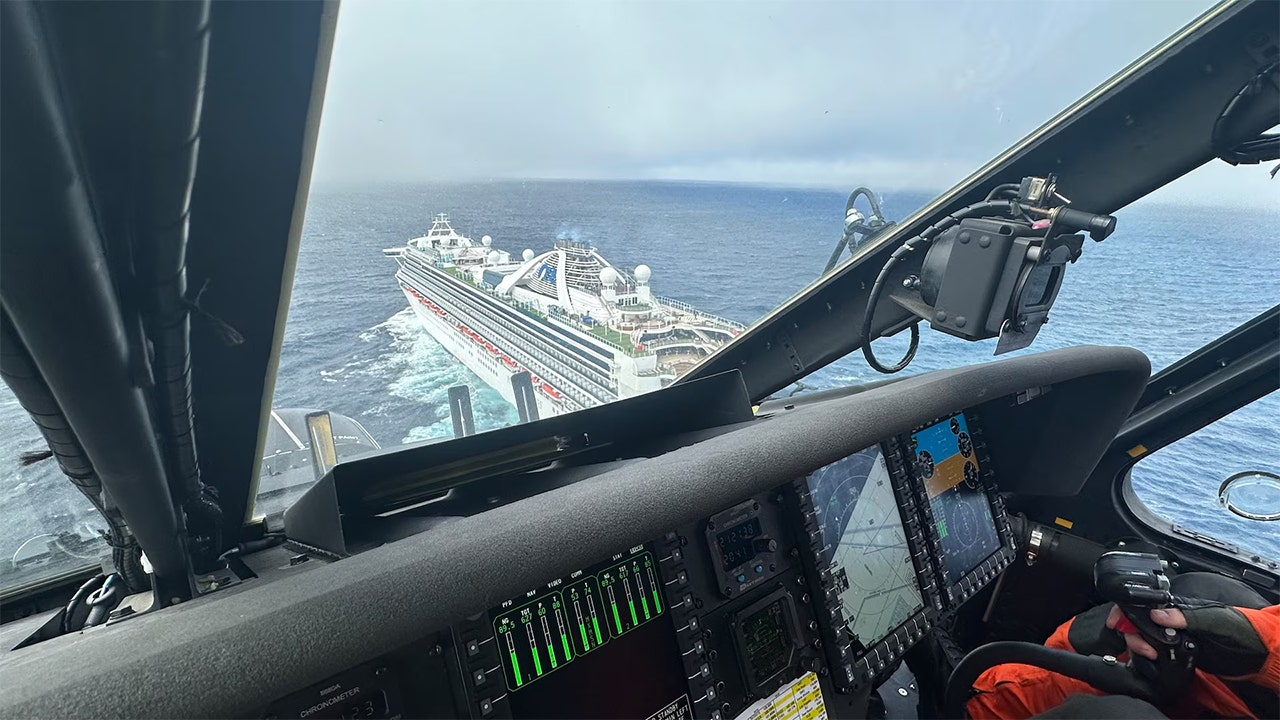The vast expanse of the ocean presents unique challenges when it comes to providing emergency medical services. A recent incident highlights the complexities and capabilities involved in a medevac operation far from shore. A 63-year-old passenger aboard the Grand Princess cruise ship, over 170 miles off the coast of Los Angeles, suffered severe abdominal pain, necessitating a dramatic rescue effort coordinated by the U.S. Coast Guard. This event underscores the importance of swift, coordinated responses in maritime emergencies, involving advanced technology, skilled personnel and unwavering commitment to preserving life at sea, even hundreds of miles from land. The meticulous planning and execution of this medevac operation serve as a powerful example of the U.S. Coast Guard’s readiness and dedication. This incident is not an isolated occurrence and offers a valuable opportunity to examine the processes involved in such maritime rescues.
The Urgent Call for a Medevac
The Initial Request and Distance Challenges
On Saturday at 1 a.m., the Coast Guard District Eleven Command Center received a distress call from the Grand Princess cruise ship, requesting a medevac for a passenger experiencing severe abdominal pain. The initial location of the ship was over 1,000 miles off the coast of San Diego. This significant distance from land immediately presented a considerable logistical challenge. The remoteness meant that traditional methods of emergency response were not feasible. A helicopter rescue from such a distance required careful coordination and precise timing, factoring in fuel considerations for the rescue aircraft and potential weather changes. Efficient communication was also critical.
Maintaining Communication Across Vast Distances
Given the considerable distance to shore, the Coast Guard implemented a carefully planned communications schedule. This ensured consistent contact with the cruise ship and provided regular updates on the patient’s condition. This strategy demonstrated careful management of resources, prioritizing safety and effective deployment. Every four hours, the Coast Guard maintained contact with the ship, ensuring a seamless flow of information and continuous monitoring of the patient’s condition. This proactive approach helped to manage expectations and ensure a smooth transition during the rescue process. Without reliable and frequent communication, crucial information about the passenger’s evolving condition could be delayed or completely missed, which could significantly impact the success of the medevac.
The Medevac Operation: A Carefully Orchestrated Effort
Overflight Support and Helicopter Rescue
The medevac operation finally commenced around 2:30 p.m. on Sunday, approximately 36 hours after the initial distress call. The delay highlights the significant challenges inherent in long-distance maritime rescues. This delay wasn’t solely caused by distance, but required careful planning and coordination among different teams and the need to position the rescue personnel strategically for the most successful outcome. A Coast Guard Jayhawk helicopter crew successfully hoisted the patient from the Grand Princess. Simultaneously, a Coast Guard Air Station Sacramento C-27 Spartan aircrew provided crucial overflight support. This coordinated approach demonstrated the interoperability of different Coast Guard assets and their ability to work synergistically for complex rescue missions. The overflight likely assisted in navigation, coordination and overall safety measures of the operation.
The Return to Shore and Immediate Medical Care
Upon returning to shore, the rescued passenger, while still needing assistance, was able to walk to an ambulance for immediate medical attention. This positive outcome emphasizes not only the successful execution of the medevac operation but also the immediate access to crucial medical assistance upon landing. It underlines the coordinated effort of various agencies – from the cruise ship’s staff providing initial care, to the coast guard team performing the rescue, and the ambulance crews providing further treatment upon return to the mainland. Without the quick work, expertise and smooth handover, the outcome might have been vastly different.
The Role of Coast Guard Air Station Ventura
A New Station’s First Rescue
This medevac operation marked the first rescue conducted by the newly established Coast Guard Air Station Ventura. This is a significant milestone and represents an expansion of the Coast Guard’s rescue capabilities in the region. The success of this initial mission underscores the careful planning and training involved in establishing such a crucial facility. The successful deployment serves as a strong indicator that they were prepared for these types of missions, adding greater response capabilities within the region. It further suggests that establishing additional such strategically located stations are important to maintaining a high level of readiness and responding swiftly and effectively to various maritime emergencies.
Enhanced Response Capabilities and Future Preparedness
The establishment of the Ventura air station indicates an investment in infrastructure and manpower to address the unique challenges of maritime rescue operations. Having strategically located rescue stations further emphasizes that prompt rescue and timely medical care is being prioritized by relevant stakeholders. With their new, critical air support, responses to emergencies are likely to be quicker and more effective for any vessels needing support within the increased coverage areas, and may prove especially beneficial for areas less readily serviced before.
Takeaways
- Maritime medevacs require extensive planning and coordination. The delay of 36 hours between the initial distress call and the rescue demonstrated the logistical complexity of rescuing a passenger so far from shore.
- Effective communication is crucial in long-distance rescues. The consistent four-hour communication schedule highlighted the vital role of sustained communication to ensure a successful outcome.
- Successful medevacs require cooperation between multiple agencies. The coordinated efforts of the Coast Guard’s different units and agencies show that a multi-agency approach is essential.
- New infrastructure increases rescue capabilities and operational efficiency. The successful first rescue performed by Coast Guard Air Station Ventura confirms that investing in improved infrastructure plays a significant role in improved rescue time and potentially better outcomes for those needing immediate medical help.









